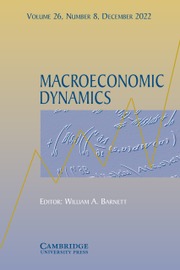No CrossRef data available.
Article contents
Productivity convergence in manufacturing in the Eurozone: a hierarchical panel data approach
Published online by Cambridge University Press: 27 May 2025
Abstract
This paper investigates both conditional and unconditional convergence in labor productivity within the manufacturing industries of the Eurozone over the period 1963 – 2018. We employ two innovative models: constant and varying-coefficient hierarchical panel data convergence regression models, each equipped with two sets of latent factor structures—one comprising global factors and the other industry-specific factors. These models offer distinct advantages, allowing for both global and industry-specific cross-sectional dependencies and permitting parameter heterogeneity across individual industries. Our findings reveal both conditional and unconditional convergence across the manufacturing industry as a whole, as well as among the majority of the 23 sub-manufacturing industries at the ISIC two-digit level. Moreover, we observe significant variation in convergence dynamics among these sub-manufacturing industries. Robustness checks, performed across different subperiods, confirm the reliability of our results. Furthermore, a comparison of our model’s outcomes with those of two alternative models provides additional support for our conclusions.
Keywords
Information
- Type
- Articles
- Information
- Copyright
- © The Author(s), 2025. Published by Cambridge University Press

